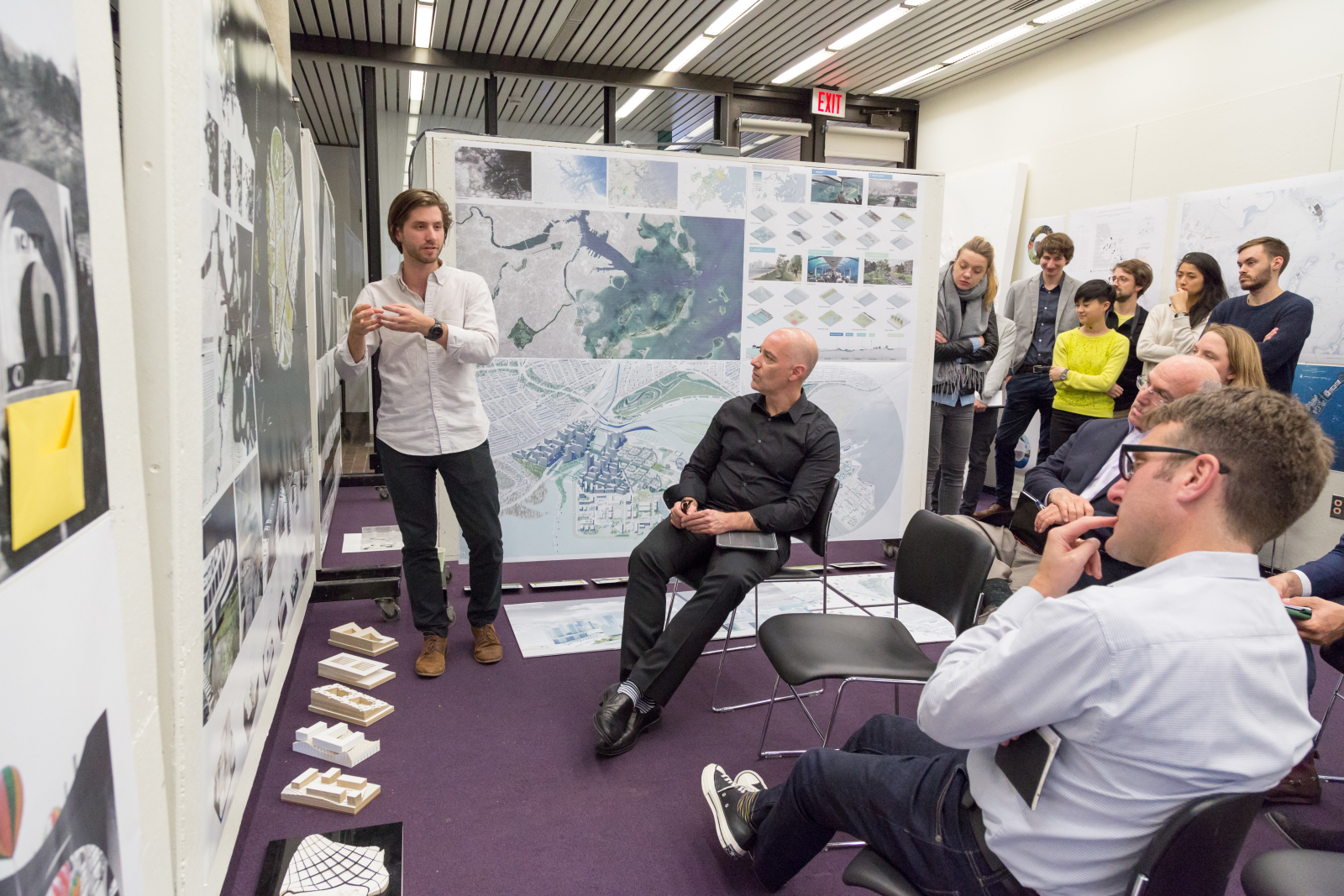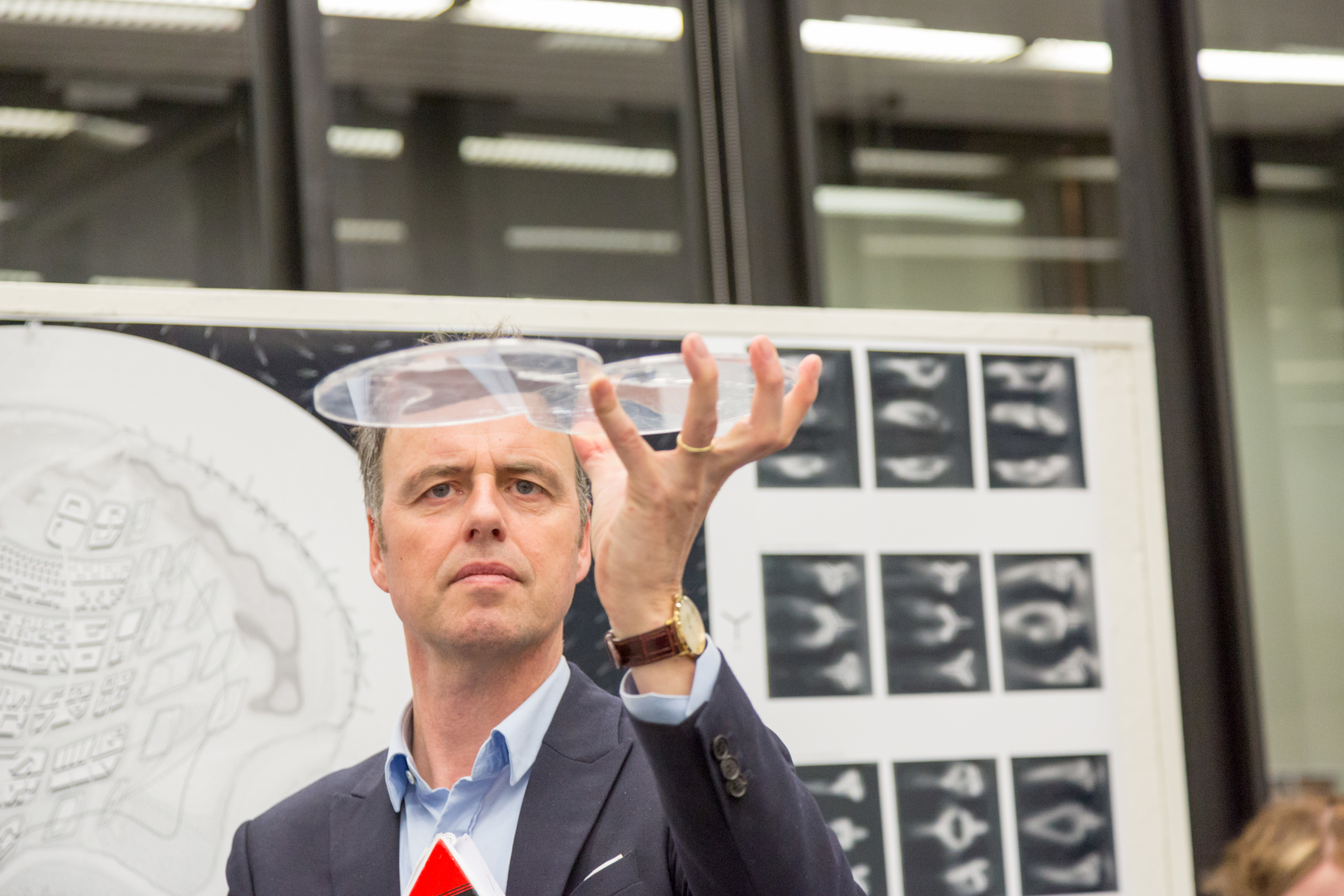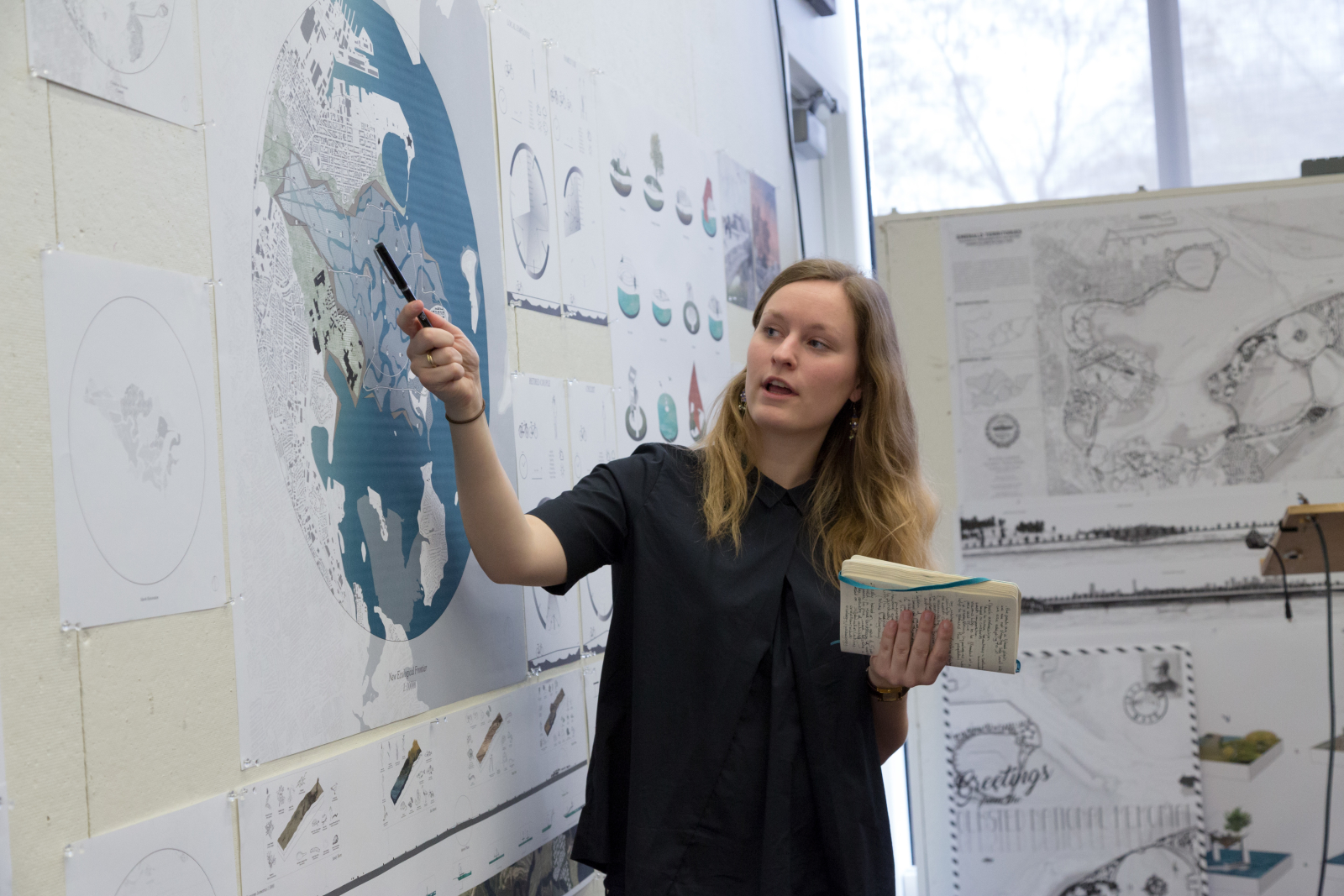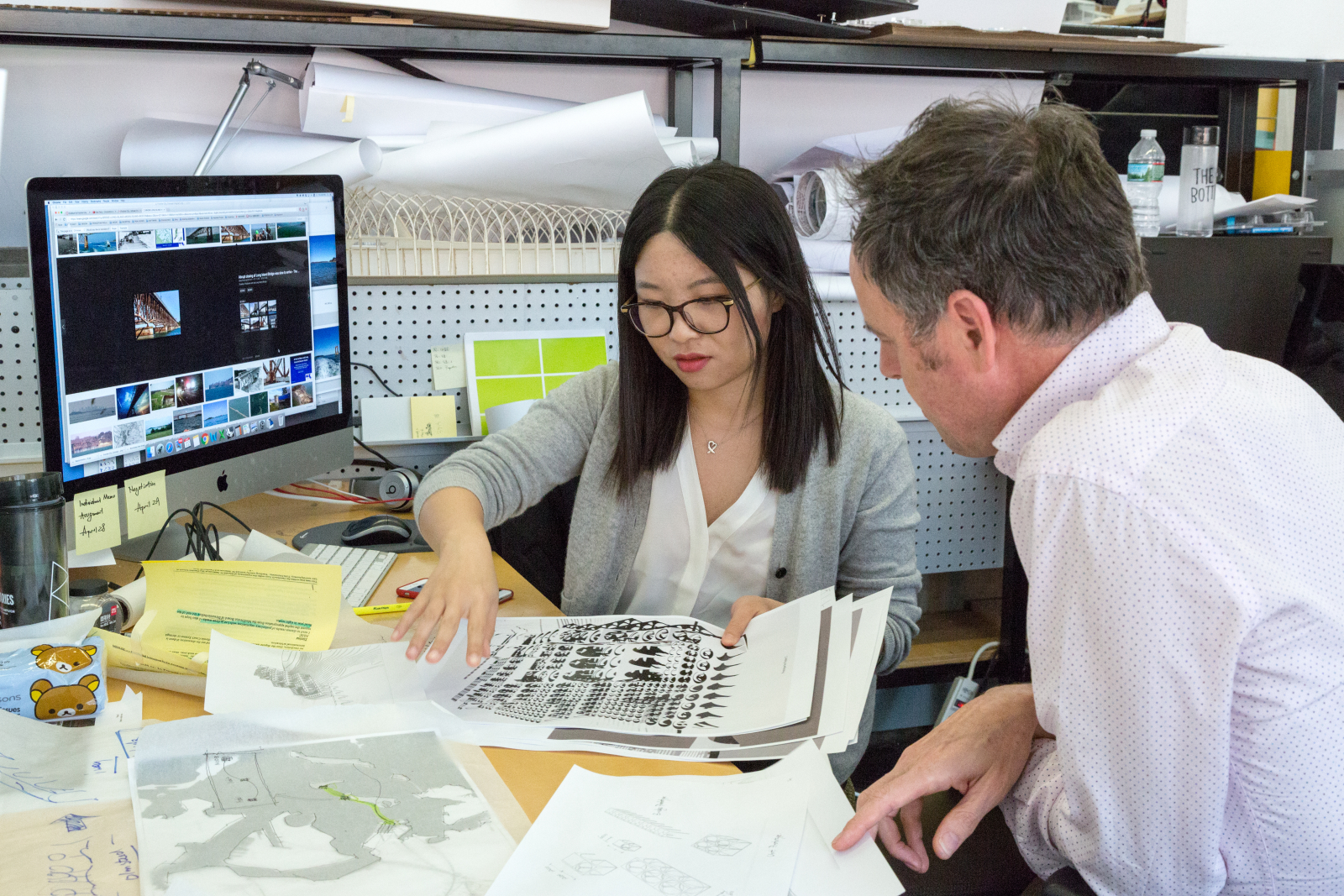Frontiers of Innovation: Reconsidering the Boston Harbor Islands
 One question around the Boston Harbor Islands—a constellation of islands in Boston Harbor, just offshore from downtown Boston—is finishing the narrative of Frederick Law Olmsted’s Emerald Necklace, the chain of parks linked by parkways and waterways across Boston. How to engage with an island chain that is simultaneously protected—of the roughly 35 islands and peninsulas in Boston Harbor, 16 islands were established in the 1970s as the Boston Harbor Islands State Park, and designated as a National Park unit in 1996—but also lying at the edge of a city under great stress for growth and development?
One question around the Boston Harbor Islands—a constellation of islands in Boston Harbor, just offshore from downtown Boston—is finishing the narrative of Frederick Law Olmsted’s Emerald Necklace, the chain of parks linked by parkways and waterways across Boston. How to engage with an island chain that is simultaneously protected—of the roughly 35 islands and peninsulas in Boston Harbor, 16 islands were established in the 1970s as the Boston Harbor Islands State Park, and designated as a National Park unit in 1996—but also lying at the edge of a city under great stress for growth and development?
“Bostonians have seen the Harbor Islands as a national park, but the reality is that you get there and it’s a collection of crumbling infrastructure,” says Daniel Vasini, design critic in landscape architecture at the GSD.
These and other considerations formed the basis for Spring 2016 landscape architecture option studio Frontier City, co-taught by Vasini and West 8 founding partner Adriaan Geuze.
We took seriously how the landscape architecture department is looking to Boston to investigate real issues.
“We knew that many other option studio sites were abroad, so we wondered what the student reaction to something local would be,” Vasini says, “but we took seriously how the landscape architecture department is looking to Boston to investigate real issues.”
“Frontier becomes a key word: What is the new frontier, especially in a city bound by water?” Vasini cpntinues. One proposal he considered: reinventing the area as a so-called “innovation district.” Noting other examples of innovation districts in other cities, as well as an uptick in RFPs for the planning and design of such districts, Vasini considered this framework as a valuable one for the reconsideration of Boston’s harbor frontier. From this, the foundation for a course on defining Boston’s “frontier city” was set.
“In their preserved state, the Boston Harbor Islands are only minimally accessible to people, which has created a disconnect between Boston and the islands,” says studio participant Anita Helfrich MArch ’17. “Not many people know that they exist, and even if they do, it is not easy to visit them. By designing new urban developments between downtown Boston and the Boston Harbor Islands, they can feel more connected.”
Geuze and Vasini researched and designed the studio’s mission for about two months before presenting it during the GSD’s Spring 2016 option studio lottery last January. They defined it as an investigation of the rise of the innovation district; the course description takes note of the cultural context facing today’s designers, characterized by a shift from traditional industries into a knowledge-based economy favoring such entities. This economy connects society to the global market and fuels high-tech incubators, creative environments, start-ups, flexible workspaces, the arts, R&D technologies, and mixed-used living environments. Nimble, innovation-minded enterprises are taking ownership of unoccupied, vacant, or inhospitable sites, the course description posits. For Boston, the coastline and the harbor become new frontiers, both physically and culturally.
Broadly, students were asked to consider the city as an adaptive, proactive urban infrastructure based on the dockland warehouse typology, complete with a reimagining of urban streetscapes and resilient landscapes. Integral to the question: interfacing with the landscape of the Boston Harbor, and defining the new space to accommodate future growth and stimulate an urban renaissance within the City of Boston—if not to create an opportunity to invent a “new nature.”
Geuze opened the course with an introduction about cities, waterfronts, sea level rise, and innovation, delineating the specific issues that students would investigate over the course of the semester. “Adriaan’s presentation seemed pedagogically aligned with what all design schools should be doing: focusing on local communities,” says studio participant Stephen Sun MArch ’16.
Vasini guided student teams through research for a month, and then each team presented its research to each other: one group researching the islands, one researching the bay, one focused on innovation districts, another examining the sociological and generational timeline of the people and communities who have lived on the bay and the implications therein.
A preliminary review, added before the traditional midterm review, encouraged students to draw conclusions based on their early research and present a scheme. For the midterm review, each student presented a proposal and plan drawing tied to their field of research, announcing what would be their field of development. The instructors, through both the pedagogical structure of the semester and the physical layout of pin-up and review space, encouraged cross-pollination between research agendas and outputs.
“The balance of historical, conceptual, and technical research was extraordinarily holistic,” says Sun. “The diversity of projects curated by Daniel and Adriaan furthered us to learn about the same topic from each other as students in addition from the experts and jury.”
Amid this were lectures from outside figures, including the organization Imagine Boston 2020 and Dr. Alan Blumberg, who discussed the ocean and tides.
“Having Dr. Blumberg as a ‘resident expert’ for our studio was definitely a surprise,” Sun adds. “It was the perfect marriage between designer and scientist/engineer.”
“Some students had never heard this before, the environmentalist’s view,” Vasini says. “They’d been accustomed to hearing from architects and designers, so the discourse from this was really rich.”
The mix of projects, discussions, and solutions generated throughout the course was in proportion to the blend of disciplinary perspectives that students and professors brought to it.
“One student understood that the Park Service thinks these islands are untouchable and no building will take place on them,” Vasini says, “so she said, ‘Okay, I won’t touch them, but know that Boston is under great pressure for urban development. If we don’t guide the development somewhere, it will sprawl and kill more landscape. If we are to stay within the city, we need to go to the islands, the post-industrial spaces.’” The resulting proposal landfilled the harbor surrounding the islands, created a new, peninsula-like island, and made the islands more accessible. (“It was like a little Venice,” Vasini says. “Low rise, high density.”)
Another student, Andrew Madl MLA ’17, looked more closely at sedimentation in the bay and appraised how much effort would be needed to dredge JFK Channel and then dump elsewhere. He conducted research into currents, flow, and aquadynamics, and modeled what Vasini calls a “new way of making land,” employing a “sand engine” concept.
Other students pursued completely different narratives. Sarah Winston MLA ’16 found inspiration in Olmsted’s writings on the Harbor Islands and envisioned a place that could become an enclave for future techies—an incubation and testing ground for tomorrow.
A second option studio focused on the Boston Harbor Islands will take place in Spring 2017.
Boston is part of the four metropolis regions within the U.S. identified for the first phase of the Harvard GSD American Cities Initiative. The other three cities include Detroit, MI; Los Angeles, CA; and Miami, FL. While an overarching set of research themes — affordability, livability, mobility, resilience, densification, waterfront development, and sustainability — provide a consistent armature for the broader Initiative, the establishment of a unique research strategy for each city will ensure the development of actionable design proposals within the Initiative’s preliminary time horizon of 3-5 years.
This story was written by Travis Dagenais and originally published on the GSD website.






